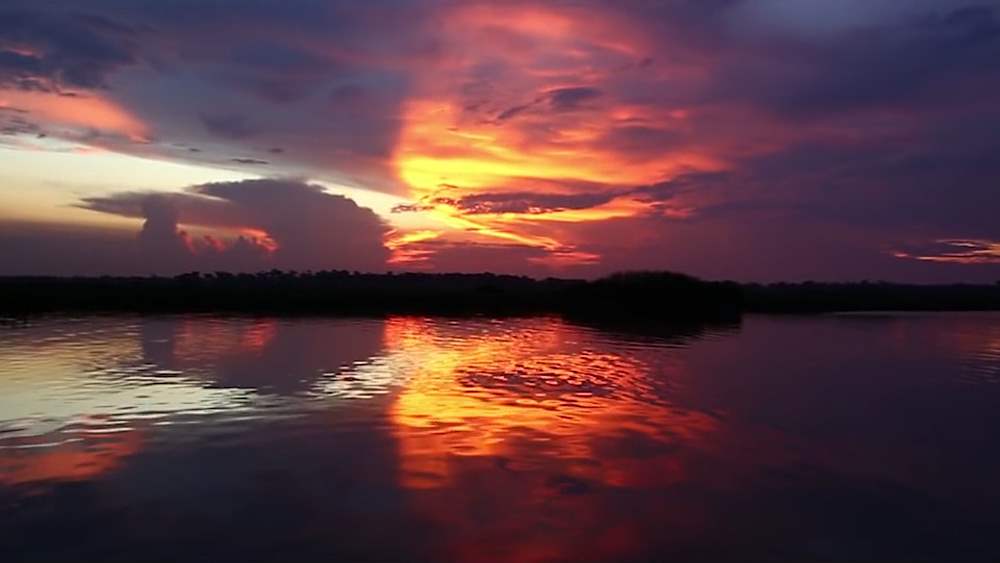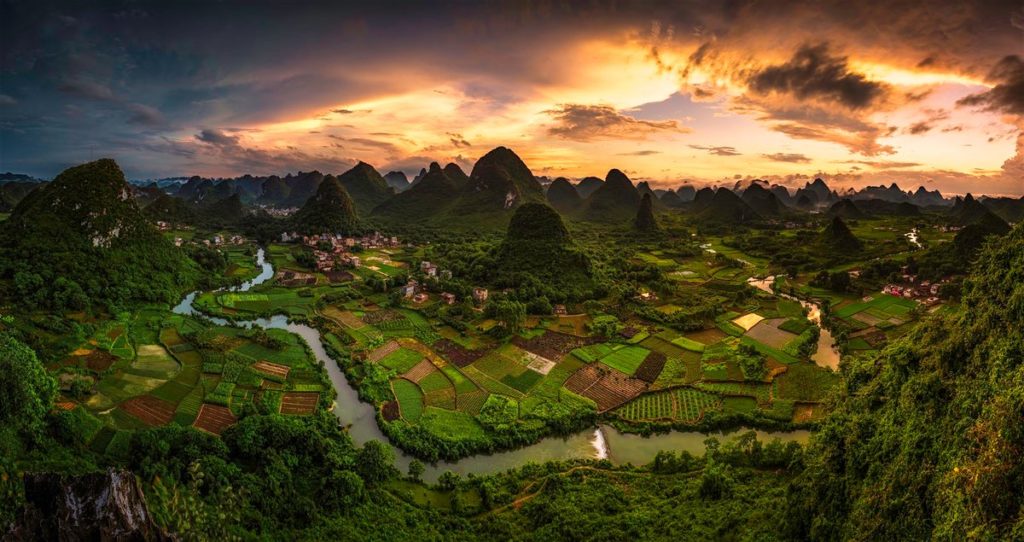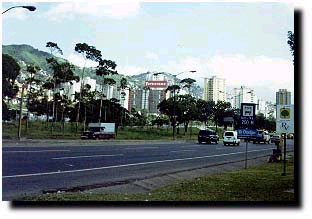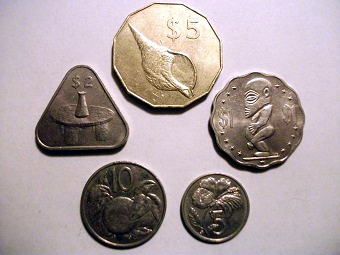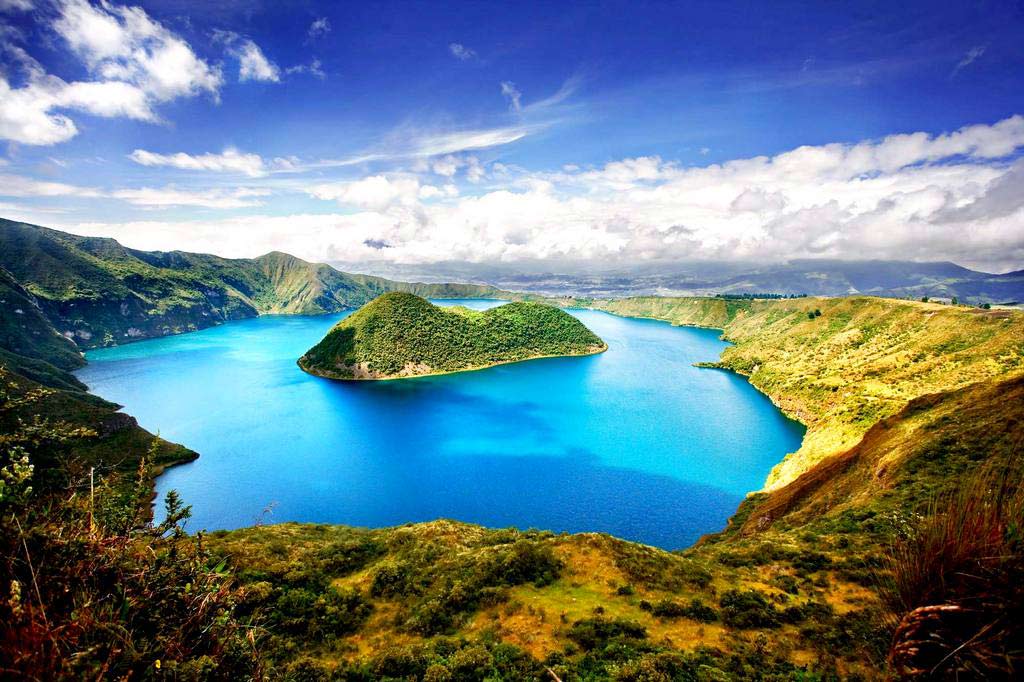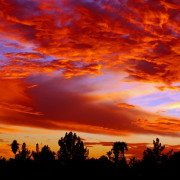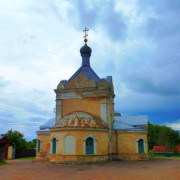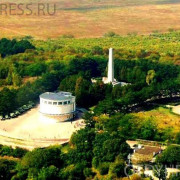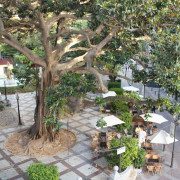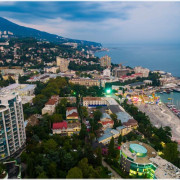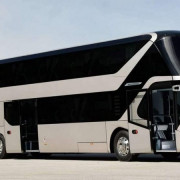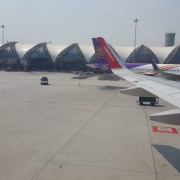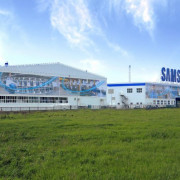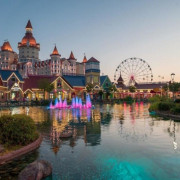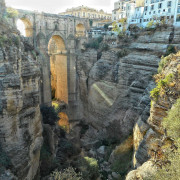Венесуэла
Содержание:
Etymology
A palafito, similar to those seen by Americo Vespucci.
The name «Venezuela» is believed to have originated from the cartographer Amerigo Vespucci who, together with Alonso de Ojeda, led a 1499 naval expedition along the northwestern coast’s Gulf of Venezuela. On reaching the Guajira Peninsula, the crew observed the distinctive stilt villages, palafitos, that the indigenous Añu people had built over the water. This reminded Vespucci of the city of Venice (Italian: Venezia), so he named the region «Venezuola,» meaning «little Venice» in Italian. In Spanish, the suffix -zuela is used as a diminutive term.
Martín Fernández de Enciso, a member of Vespucci and de Ojeda’s crew, states in his work Summa de Geografía that the indigenous population they found were called «Veneciuela,» suggesting that the name «Venezuela» may have evolved from a native word. The Vespucci story, however, remains the most popular and accepted version of the origin of the country’s name.
География Венесуэлы
Венесуэла располагается на северном побережье Южной Америки. На западе Венесуэла граничит с Колумбией, на востоке – с Гайаной, а на юге – с Бразилией. На севере страна омывается водами Карибского моря. Общая площадь – 916 445 кв. км., а общая длина государственной границы – 4 993 км.
В состав Венесуэлы входят многочисленные небольшие острова, самым большим из них является остров Маргарита, который сейчас представляет собой популярный южноамериканский курорт.
Территорию Венесуэлы можно разделит на четыре физико-географических региона: низменность Маракайбо на северо-западе, горы на севере, равнины в центральной части, и Гвианское нагорье на юго-востоке. Самая высокая местная вершина – пик Боливар, чья высота достигает 4 979 метров.
На юге страны в Национальном парке Канайма находится самый высокий в мире водопад – водопад Анхель, чья общая высота равняется 979 метров.
В Венесуэле насчитывается около 1 000 рек, но большинство из них очень маленькие. Самая большая и важная местная река – Ориноко, протяженностью 2 500 километров.
Достопримечательности
Самая главная туристическая достопримечательность в Венесуэле – это водопад Анхель, который является самым высоким водопадом в мире. Ежегодно на него приезжают посмотреть десятки тысяч туристов из разных стран мира. Правда, чтобы добраться к этому водопаду, нужно сначала преодолеть дорогу по джунглям, протяженностью около 3 километров.
Большой интерес у туристов вызывают венесуэльские национальные парки, самые лучшие из них – Национальные парки Авила, Мочима, Меданос де Коло, Морокой, Канайма, Энри Питье, Ла-Мукуй, Эль-Авила и Сьерра-Невада.
В Национальном парке Меданос де Коло туристы могут увидеть настоящие песчаные дюны, характерные для стран Азии и Африки. Очень необычно их видеть в тропической стране. Но самым странным является то, что высота этих дюн часто достигает 40 метров, и они очень быстро исчезают. Причина этого заключается в постоянном ветре.
Рекомендуем также обязательно посетить Национальный парк Канайма. Многие из нас читали роман Конан Дойля «Затерянный мир». Так вот, вдохновил знаменитого англичанина на написание этого романа именно венесуэльский Национальный парк Канайма.
Обратите внимание и на дельту реки Ориноко с нетронутой природой тропического леса. Таких красивейших джунглей с уникальным растительным и животным миром больше нет ни в одной стране мира
Economy
The petroleum sector dominates Venezuela’s mixed economy, accounting for roughly a third of GDP, around 80 percent of exports and more than half of government revenues. The country’s main petroleum deposits are located around and beneath Lake Maracaibo and the Gulf of Venezuela. The oil sector operates through the state-owned Petróleos de Venezuela (PDVSA), whose subsidiaries include the distributor CITGO. Other major exports are bauxite and aluminum, steel, petrochemicals, and agricultural produce. Venezuela’s main trading partners are the United States, Colombia, Brazil, and Mexico. In line with Chavez’s promise to turn the country into a socialist state, Venezuela withdrew from the World Bank and International Monetary Fund and is undergoing a rapid nationalization program.
Venezuela is also highly dependent on its agriculture. Sectors with major potential for export-led growth are production of both coffee and cocoa crops. At one time, Venezuela ranked close to Colombia in coffee production, but in the 1960s and 1970s, as petroleum temporarily turned Venezuela into the richest country in South America, coffee was relegated to the economic back burner.
In the first decade of the twenty-first century Venezuela produced less than one percent of the world’s coffee, most of it consumed by the domestic market. However, Venezuelan coffees are again entering North American specialty markets. Venezuela’s cocoa industry has decayed since the days of Spanish colonialism, when African slaves worked on cocoa estates. The focus of cocoa cultivation has long since moved to tropical West Africa. In recent years, there has been an attempt to resuscitate this industry, as its rare variety of cacao, known as Chuao, is considered the finest and most aromatic in the world and is used in certain single-origin chocolates. The largest Venezuelan fine chocolate producer is El Rey, though some companies such as Savoy (Nestlé) also manufacture chocolate from Venezuelan cacao and export it to Europe.
Venezuela is one of the five founding members of OPEC, which was the initiative of Venezuelan politician Juan Pablo Pérez Alfonzo; it was proposed in 1960 as a response to low domestic and international oil prices. Since 2005, Venezuela has also been an unratified member of MERCOSUR, joining Brazil, Argentina, Paraguay, and Uruguay; it has yet to gain voting rights. Venezuela is also a member of the Union of South American Nations (Unasul-Unasur).
Кухня Венесуэлы
Кухня Венесуэлы сформировалась под влиянием кулинарных традиций местных индейцев, французов, итальянцев и испанцев. Возле морского побережья в меню венесуэльцев преобладает рыба и морепродукты, а в глубине страны – кукуруза и рис. Очень важная часть венесуэльской кухни – мясо (говядина, баранина, курица и др.).
Туристам рекомендуем попробовать «Pabellon» (тушеная говядина с рисом, черной фасолью и бананом), «Hallaca» (суп из говядины, курицы или рыбы с картофелем и овощами), «Pernil» (жареная свинина с чесноком, уксусом и орегано), «Chivo al coco» (козлятина в кокосовом молоке, подается с пюре из зеленных бананов), «Empandas» (жареные пирожки из кукурузной муки с разной начинкой), «Tequeños» (длинные маленькие булочки, наполненные горячим сыром или шоколадом).
Традиционные безалкогольные напитки – «Batido» (очень густой фруктовый сок), «Cocada» (молочный коктейль из кокосового молока, распространен в приморских районах), «Frescolita» (похож на крем-соду).
Традиционные алкогольные напитки – «Chicha» (ферментированный напиток с рисом, молоком и сахаром), ром и пиво.
Culture
The Teresa Carreño Cultural Complex in Caracas.
Venezuela’s heritage, art, and culture have been heavily influenced by its Latin American context. These elements extend to its historic buildings, architecture, art, landscape, boundaries, and monuments. Venezuelan culture has been shaped by indigenous, Spanish and Italian, and some African influences. Before this period, indigenous culture was expressed in art (petroglyphs), crafts, architecture (shabonos), and social organization. Aboriginal culture was subsequently assimilated by Spaniards; over the years, the hybrid culture diversified by region.
Venezuelan art is gaining prominence. Initially dominated by religious motifs, it began emphasizing historical and heroic representations in the late nineteenth century. Modernism took over in the twentieth century.
Venezuelan literature originated soon after the Spanish conquest of the mostly pre-literate indigenous societies; it was dominated by Spanish influences. Following the rise of political literature during the War of Independence, Venezuelan Romanticism emerged as the first important genre in the region.
The national musical instrument is the cuatro. Typical musical styles and pieces mainly emerged in and around the llanos region. The national dance is the joropo.
Baseball is Venezuela’s most popular sport, although football (soccer), spearheaded by the Venezuela national football team, is gaining influence.
Венесуэльские пляжи
- Playa Puerto Cruz: сюда устремляются желающие разместиться на пикник и покорить довольно высокие волны. Но желающим искупаться стоит учесть, что вода тут прохладная.
- Balneario Camuri Chico: на 100-метровом пляже в форме полумесяца работает пункт аренды шезлонгов, открыты заведения питания, функционирует автомобильная парковка и душевые кабинки.
- Playa El Yaque: пляж – популярное место среди кайт- и виндсерфингистов. Он оборудован серф-центрами, барами, ресторанами, отелями, семейными гостиницами.
- Playa El Agua: пляж, на котором часто господствуют высокие волны, оснащен ресторанами, ночными клубами и магазинами, торгующими пляжной одеждой, аксессуарами и сувенирами.
Государственное устройство Венесуэлы
Согласно Конституции, Венесуэла – это федеративная президентская республика, главой которой выступает избираемый на 6 лет Президент. Исполнительная власть принадлежит Президенту, а также Вице-президенту и министрам.
Однопалатный местный парламент называется Национальная Ассамблея, он состоит из 162 депутатов.
Основные политические партии – ЕСПВ (Единая социалистическая партия Венесуэлы), Коалиция демократического единства и Коммунистическая партия.
Административно страна делится на 23 штата, один Федеральный округ (район Каракаса) и Федеральные владения (острова в Карибском море). Штаты в свою очередь разделяются на 335 муниципалитетов.
Demographics
Half of the estimated 27,483,200 Venezuelans are mestizo (mixed white and indigenous ancestry); another 41 percent are white Latin American, mostly of Italian, Spanish, German, and Portuguese stock. Other important minority groups include Afro-Venezuelans (7 percent), and Asians (2 percent), who are of predominantly Arab or Chinese descent. Only one percent of Venezuelans are Native Americans.
These groups were joined by sponsored migrants from throughout Europe and neighboring parts of South America during waves of immigration in the early twentieth century; many were attracted again by the mid-century economic boom. About 85 percent of the population live in urban areas in northern Venezuela; 73 percent live less than 100 kilometers (62 mi) from the coastline. Though almost half of Venezuela’s land area lies south of the Orinoco, only 5 percent of Venezuelans live there.
The national and official language is Spanish; 31 indigenous languages are also spoken, including Guajibo, Pemon, Warao, Wayuu, and the various Yanomaman languages. European immigrant communities and their descendants commonly use their own native languages. Nominally, 96 percent of the population belongs to the Roman Catholic Church.
Credits
New World Encyclopedia writers and editors rewrote and completed the Wikipedia article
in accordance with New World Encyclopedia standards. This article abides by terms of the Creative Commons CC-by-sa 3.0 License (CC-by-sa), which may be used and disseminated with proper attribution. Credit is due under the terms of this license that can reference both the New World Encyclopedia contributors and the selfless volunteer contributors of the Wikimedia Foundation. To cite this article click here for a list of acceptable citing formats.The history of earlier contributions by wikipedians is accessible to researchers here:
- Venezuela history
- Bolivarian_Revolution history
- History_of_Venezuela history
- Venezuelan_constitutional_referendum,_2007 history
The history of this article since it was imported to New World Encyclopedia:
History of «Venezuela»
Note: Some restrictions may apply to use of individual images which are separately licensed.
